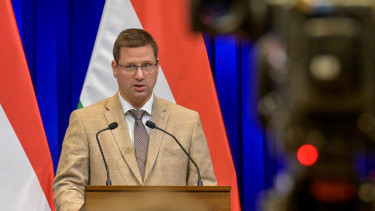EU funds
Hungary records huge EU funds inflow in May
Several hundred new tender winners
Portfolio’s database updated at the start of every month shows that more than 500 winners of EU tenders were announced in Hungary in May, most (226) in the Competitive Central-Hungary Operational Programme (CHOP or VEKOP), with new allocations reaching some HUF 6 billion. According to the funding database, nearly 200 companies won a few million forints worth of funding each for trainings, and several dozen cultural institutions received funds to improve the efficiency of public education.The largest sum (HUF 27 bn) was allocated in the Environment and Energy Efficiency Operational Programme (KEHOP), distributed between 83 tender winners. Several larger building energy development projects by municipalities won hundreds of millions of forints in May. Budapest received billions in EU funding for energy upgrades in the district heating sector, and numerous small settlements won EU funds to work out local climate change strategies and to raise climate change awareness.
As the summary table below shows, with more than 500 tender winners in May, the number of projects allocated EU funds in the 2014-2020 programming period exceeded 125,000, with HUF 9,260 billion funds allocated. The volume of allocated subsidies rose HUF 49 bn last month.
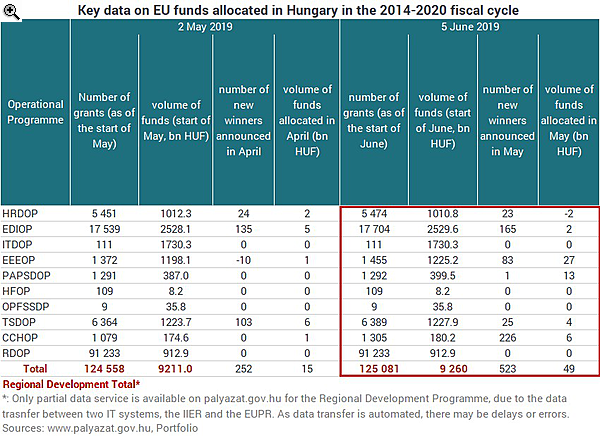
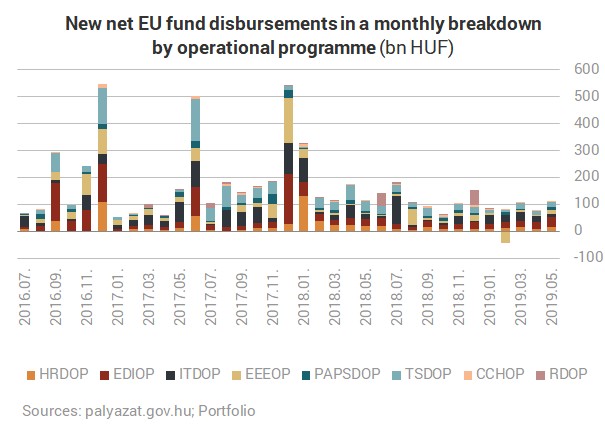
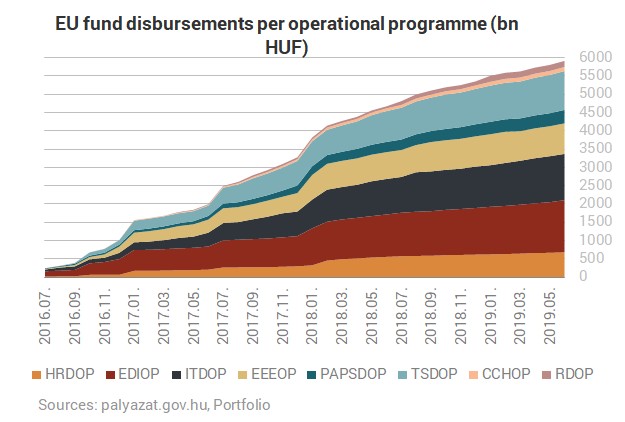
The fourth column of the table below shows that the institutional system extended beyond the envelopes with its tenders invited in each programme. In fact, the sixth column shows that the allocations also exceeded 100% of the available 7-yr funding.
The last column of the table contains our estimates on the funding that has already been allocated but will need to be “given back" for the winners cannot see the projects through for some reason. In nominal terms, the largest chunks of such funds (possibly over HUF 400 bn) could be recorded at GINOP which has the largest envelope. Up to 20% of the allocated funds may return to the host (the state) this way, partly due to the impediments created by overly rapid price and wage increases.
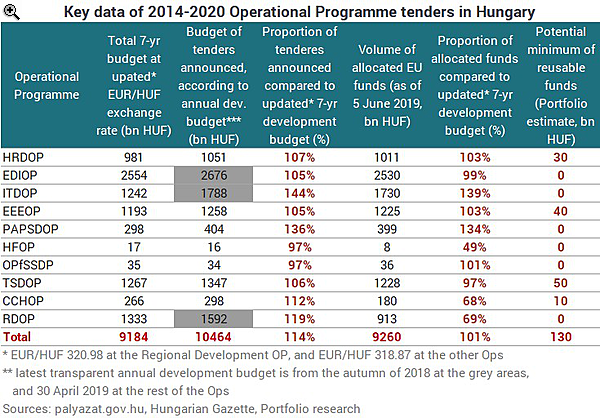
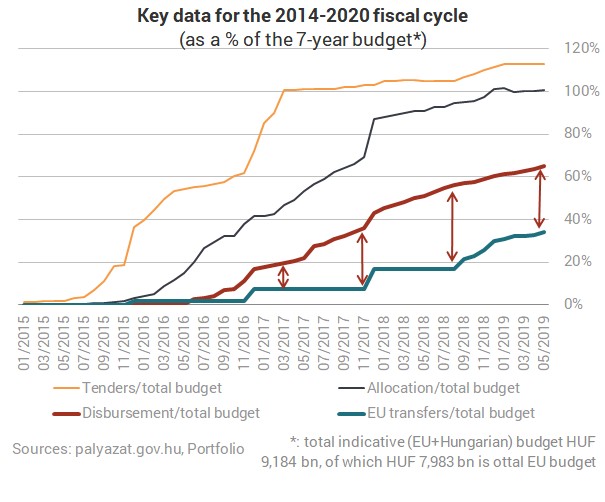
The red arrows between the two figures are indicated by the red arrows in the charts below. The nominal gap was some HUF 3,200 bn at the end of May. The question is how and at what rate this gap could close. In the second half of May, there were reports again that consultations in serious accounting disputes were still in progress between Brussels and Hungarian authorities and that no deal was in sight yet.
Relating to oversight of public procurement tenders, Budapest tabled a proposal in Brussels in late May that would lead to a 400 billion forint financial penalty, according to local news portal 24.hu.
Portfolio’s reliable sources in Brussels claim the potential financial penalty is a lot larger than this, and until an agreement is reached no transfer can be expected, i.e. the gap will not be narrowed.
The paper also noted that the EC is unlikely to settle for a 10% financial correction of some HUF 4,000 bn worth of public procurements, and a penalty of up to HUF 1,000 billion may be proposed in the end.
The aforementioned HUF 400 bn penalty would not be a net loss of funds, provided the Hungarian authorities agree to it, rather than a second chance to “forget" the invoices of the affected projects and announce new tenders for HUF 400 bn worth of development projects.
The chart below also shows that the announced tender framework steadily remains over HUF 10,000 bn, whereas the theoretical envelope (at the latest EUR/HUF exchange rate) is HUF 9,184 bn, and total allocated funding (HUF 9,260 bn) exceeded this by nearly 1%.
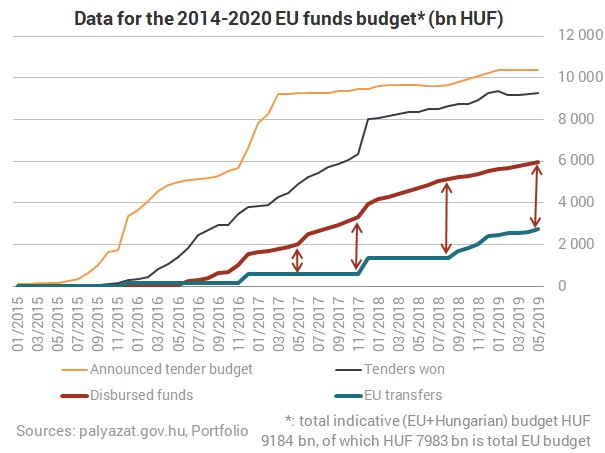

This article is part of the work programme titled "The impacts of EU cohesion policy in Hungary - Present and Future" which is carried out by Net Média Zrt., the publisher of Portfolio.hu, between 1st April 2019 and 31st March 2020 with European Union financing. The views in this article solely reflect the opinions of the author. The European Commission as the funding entity does not take any responsibility for the use of information presented in this article.






